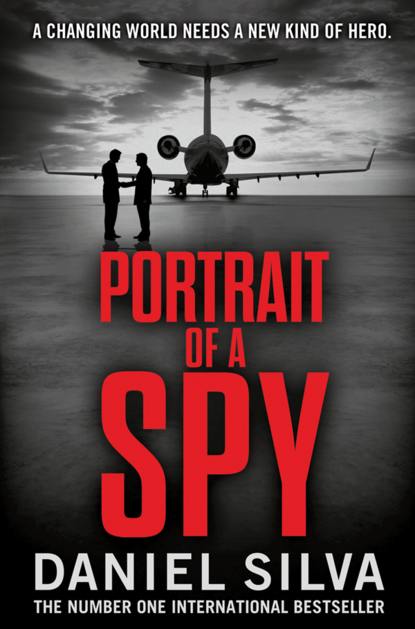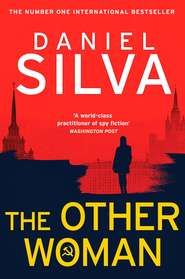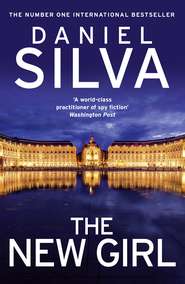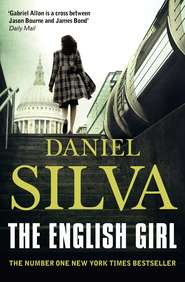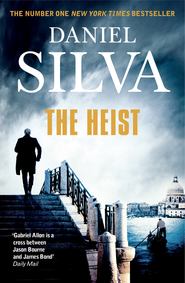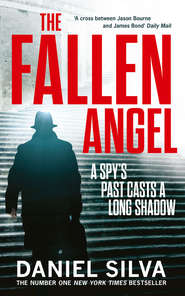По всем вопросам обращайтесь на: info@litportal.ru
(©) 2003-2024.
✖
Portrait of a Spy
Настройки чтения
Размер шрифта
Высота строк
Поля
THERE ARE FEW MORE GRIEVOUS sins for a professional intelligence officer, even a retired one, than to land in the custody of the local authorities. Because Gabriel had long occupied a nether region between the overt and secret worlds, he had suffered such a fate more often than most of his fellow travelers. Experience had taught him there was an established ritual for such occasions, a sort of Kabuki dance that must be allowed to reach its conclusion before higher authority can intervene. He knew the steps well. Fortunately, so did his hosts.
He had been taken into custody within minutes of the attack and driven at high speed to New Scotland Yard, the headquarters of London’s Metropolitan Police Service. Upon arrival, he was delivered to a windowless interrogation room where he was treated for numerous cuts and abrasions and given a cup of tea, which he left untouched. A detective superintendent from the Counterterrorism Command arrived in short order. He examined Gabriel’s identification with the skepticism it deserved and then tried to determine the chain of events that led “Mr. Rossi” to draw a concealed firearm in Covent Garden the instant before a terrorist detonated his suicide belt. Gabriel had been tempted to pose a few questions of his own. Namely, he wanted to know why two Special Firearms Officers of the Met’s SO19 division had chosen to neutralize him rather than an obvious terrorist about to commit an act of indiscriminate mass murder. Instead, he responded to each of the detective’s inquiries by reciting a telephone number. “Call it,” he said, tapping the spot where the detective had written the number in his notebook. “It will ring in a very large building not far from here. You’ll know the name of the man who answers. At least you should.”
Gabriel did not know the identity of the officer who finally dialed the number, nor did he know precisely when the call was placed. He only knew that his internment inside New Scotland Yard lasted far longer than was necessary. Indeed, it was approaching midnight by the time the detective escorted him down a series of brightly lit corridors toward the entrance of the building. In the detective’s left hand was a manila envelope filled with Gabriel’s possessions. Judging from the size and shape, it did not contain a 9mm Beretta pistol.
Outside, the pleasant weather of the afternoon had given way to a driving rain. Waiting beneath the shelter of the glass portico, engine idling softly, was a dark Jaguar limousine. Gabriel accepted the envelope from the detective and opened the rear door of the car. Seated inside, one leg crossed elegantly over the other, was a man who looked as though he had been designed for the task. He wore a perfectly fitted charcoal gray suit and a silver necktie that matched the color of his hair. Normally, his pale eyes were inscrutable, but now they revealed the strain of a long and difficult night. As deputy director of MI5, Graham Seymour bore a heavy responsibility for protecting the British mainland from the forces of extremist Islam. And once again, despite the best efforts of his department, extremist Islam had won.
Though the two men had a long professional history, Gabriel knew little of Graham Seymour’s personal life. He knew that Seymour was married to a woman named Helen whom he adored and that he had a son who managed other people’s money for the New York branch of an important British financial house. Beyond that, Gabriel’s knowledge of Seymour’s private affairs was drawn from the Office’s voluminous file. He was a relic of Britain’s glorious past, a by-product of the upper middle classes who had been bred, educated, and programmed to lead. He believed in God but not with much fervor. He believed in his country but wasn’t blind to its shortcomings. He was good at golf and other games but was willing to lose to a lesser opponent in service of a worthy cause. He was a man admired and, most important, a man who could be trusted—an attribute rare among spies and secret policemen.
Graham Seymour was not, however, a man with unlimited patience, as evidenced by his dour expression as the Jaguar pulled into the street. He removed a copy of the next morning’s Telegraph from the seatback pocket and dropped it in Gabriel’s lap. The headline read REIGN OF TERROR. Beneath it were three photographs depicting the aftermath of the three attacks. Gabriel searched the photo of Covent Garden for any sign of his presence but saw only the victims. It was a picture of failure, he thought—eighteen people dead, dozens more critically injured, including one of the officers who had tackled him. And it was all because of the shot Gabriel had not been allowed to take.
“Bloody awful day,” Seymour said wearily. “I suppose the only way it could get any worse is if the press finds out about you. By the time the conspiracy theorists are finished, they’ll have the Islamic world believing that the attacks were plotted and carried out by the Office.”
“You can be sure that’s already the case.” Gabriel returned the newspaper and asked, “Where’s my wife?”
“She’s at your hotel. I have a team staying just down the hall.” Seymour paused, then added, “Needless to say, she’s not terribly pleased with you.”
“How can you tell?” Gabriel’s ears were still ringing from the concussion of the blast. He closed his eyes and asked how the SO19 teams had been able to locate him so quickly.
“As you might imagine, we have a wide array of technical means at our disposal.”
“Such as my mobile phone and your network of CCTV cameras?”
“Precisely,” Seymour said. “We were able to pinpoint you within a few seconds of receiving Chiara’s call. We forwarded the information to Gold Command, the Met’s operational crisis center, and they immediately dispatched two teams of Specialist Firearms Officers.”
“They must have been in the vicinity.”
“They were,” Seymour confirmed. “We were on high alert after the attacks in Paris and Copenhagen. A number of teams were already deployed in the financial district and spots where tourists tend to congregate.”
“So why did they take me down instead of the suicide bomber?”
“Because neither Scotland Yard nor the Security Service wanted a rerun of the Menezes fiasco. As a result of his death, a number of new guidelines and procedures were put in place to make sure nothing like it ever happens again. Suffice it to say a single warning does not meet the threshold for taking lethal action—even if the source happens to be named Gabriel Allon.”
“So eighteen innocent people died as a result?”
“What if he wasn’t a terrorist? What if he was another street performer, or someone with mental problems? We would have been burned at the stake.”
“But he wasn’t a street performer or a mental patient, Graham. He was a suicide bomber. And I told you so.”
“How did you know?”
“He might as well have been wearing a sign declaring his intentions.”
“Was it that obvious?”
Gabriel listed the attributes that first raised his suspicions and then explained the calculations that led him to conclude the terrorist intended to detonate his device at 2:37. Seymour shook his head slowly.
“I’ve lost count of how many hours we’ve spent training our police officers to spot potential terrorists, not to mention the millions of pounds we’ve poured into behavior-recognition software for CCTV. And yet a jihadi suicide bomber walked straight into Covent Garden, and no one seemed to notice. No one but you, of course.”
Seymour lapsed into a brooding silence. They were headed north along the floodlit white canyon of Regent Street. Gabriel leaned his head wearily against the window and asked whether the bomber had been identified.
“His name is Farid Khan. His parents immigrated to the United Kingdom from Lahore in the late seventies, but Farid was born in London. Stepney Green, to be precise,” Seymour said. “Like many British Muslims of his generation, he rejected the mild, apolitical religious beliefs of his parents and became an Islamist. By the late nineties, he was spending far too much time at the East London Mosque in Whitechapel Road. Before long, he was a member in good standing of the radical groups Hizb ut-Tahrir and al-Muhajiroun.”
“It sounds to me as if you had a file on him.”
“We did,” Seymour said, “but not for the reasons you might think. You see, Farid Khan was a ray of sunlight, our hope for the future. Or so we thought.”
“You thought you’d turned him around?”
Seymour nodded. “Not long after 9/11, Farid joined a group called New Beginnings. Its goal was to deprogram militants and reintegrate them into the mainstream of Islam and British public opinion. Farid was considered one of their great successes. He shaved his beard. He severed ties to his old friends. He graduated near the top of his class at King’s College and landed a well-paying job with a small London ad agency. A few weeks ago, he became engaged to a woman from his old neighborhood.”
“So you checked him off your list?”
“In a manner of speaking,” Seymour said. “Now it appears it was all a clever deception. Farid was literally a ticking time bomb waiting to explode.”
“Any idea who activated him?”
“We’re poring over his telephone and computer records as we speak, along with the suicide video he left behind. It’s clear his attack was connected to the bombings in Paris and Copenhagen. Whether they were coordinated by the remnants of al-Qaeda Central or a new network is now a matter of intense debate. Whatever the case, it’s none of your concern. Your role in this affair is officially over.”
The Jaguar crossed Cavendish Place and stopped outside the entrance of the Langham Hotel.
“I’d like my gun back.”
“I’ll see what I can do,” Seymour said.
“How long do I have to stay here?”
“Scotland Yard would like you to remain in London for the rest of the weekend. On Monday morning, you can go back to your cottage by the sea and think of nothing other than your Titian.”
“How do you know about the Titian?”
“I know everything. Everything except how to prevent a British-born Muslim from carrying out an act of mass murder in Covent Garden.”
“I could have stopped him, Graham.”
“Yes,” Seymour said distantly. “And we would have repaid the favor by tearing you to pieces.”
Gabriel stepped from the car without another word. “Your role in this affair is officially over,” he murmured as he entered the lobby. He repeated it, again and again, like a mantra.
Chapter 8
New York City
THAT SAME EVENING, THE OTHER universe inhabited by Gabriel Allon was also on edge but for decidedly different reasons. It was the fall auction season in New York, the anxious time when the art world, in all its folly and excess, convenes for two weeks of frenzied buying and selling. It was, as Nicholas Lovegrove liked to say, one of the few remaining occasions when it was still considered fashionable to be vastly rich. It was also, however, a deadly serious business. Great collections would be built, great fortunes made and lost. A single transaction could launch a brilliant career. It could also destroy one.
Lovegrove’s professional reputation, like Gabriel Allon’s, was by that evening firmly established. British-born and educated, he was regarded as the most sought-after art consultant in the world—a man so powerful he could move markets with an offhand remark or a wrinkle of his elegant nose. His knowledge of art was legendary, as was the size of his bank account. Lovegrove no longer had to troll for clients; they came to him, usually on bended knee and with promises of vast commissions. The secret of Lovegrove’s success lay in his unfailing eye and in his discretion. Lovegrove never betrayed a confidence; Lovegrove never gossiped or engaged in double-dealing. He was the rarest of birds in the art trade—a man of his word.
His reputation notwithstanding, Lovegrove was beset by his usual case of pre-auction jitters as he hurried along Sixth Avenue. After years of falling prices and anemic sales, the art market was at last beginning to show signs of renewal. The season’s first auctions had been respectable but had fallen short of expectations. Tonight’s sale, the Postwar and Contemporary at Christie’s, had the potential to set the art world ablaze. As usual, Lovegrove had clients at both ends of the action. Two were sellers—vendors, in the lexicon of the trade—while a third was looking to acquire Lot 12, Ocher and Red on Red, oil on canvas, by Mark Rothko. The client in question was unique in that Lovegrove did not know his name. He dealt only with a certain Mr. Hamdali in Paris, who in turn dealt with the client. The arrangement was unorthodox but, from Lovegrove’s perspective, highly lucrative. During the past twelve months alone, the collector had acquired more than two hundred million dollars’ worth of paintings. Lovegrove’s commissions on those sales were in excess of twenty million dollars. If things went according to plan tonight, his net worth would rise substantially.





